

Andaman and Nicobar Islands, located in the Bay of Bengal, is a union territory known for its breathtaking natural beauty, rich marine biodiversity, and unique indigenous cultures. Known as the "Emerald Isles," it consists of 572 islands with only 38 being permanently inhabited. The territory is home to diverse communities including indigenous tribes like the Jarawa, Sentinelese, Onge, and Shompen, each with distinct cultures and traditions. From the capital Port Blair to the historic Cellular Jail, and from the pristine beaches to the vibrant coral reefs, Andaman and Nicobar presents a fascinating blend of natural wonders and historical significance. The territory's unique ecosystem, indigenous heritage, and strategic location make it a unique destination in India's maritime landscape.
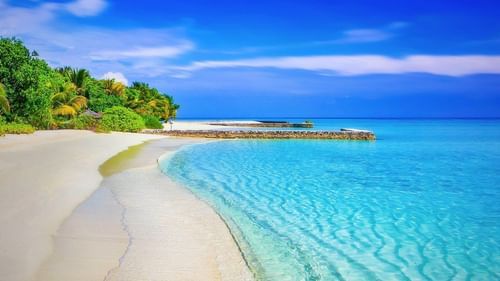
Andaman and Nicobar Islands stands as a testament to the rich historical legacy and cultural heritage of India's maritime territory. The region's history dates back to prehistoric times, with evidence of human habitation for over 2,000 years. The name "Andaman" is believed to be derived from Hanuman, while "Nicobar" comes from the Tamil word "Nakkavaram" meaning land of the naked. The islands have a recorded history of indigenous habitation for millennia, with significant developments during the colonial period.
The islands were home to various indigenous tribes who lived in isolation for thousands of years. The British established a penal colony in the Andamans in 1858, which later became the infamous Cellular Jail during the Indian independence movement. The Japanese occupied the islands during World War II, and after India's independence, the territory became an integral part of the Indian union.
Andaman and Nicobar has a rich tradition of indigenous cultures and ecological diversity. The territory is known for its unique tribal communities who have preserved their traditional ways of life for centuries. The islands are also famous for their pristine ecosystems, including tropical rainforests, mangrove forests, and coral reefs that support incredible biodiversity.
The struggle for Indian independence is deeply connected with the history of the Cellular Jail, where many freedom fighters were imprisoned. The islands played a strategic role during World War II and have continued to be important for India's maritime security. After independence, the territory has developed while striving to protect its unique ecological and cultural heritage.
The cultural legacy of Andaman and Nicobar is rich and diverse, with strong traditions in indigenous crafts, music, and dance. The territory is famous for its traditional boat building, shell crafts, and wood carvings. The indigenous tribes have unique artistic traditions, including body painting, basket weaving, and traditional jewelry making, which have been preserved through generations.
Today, Andaman and Nicobar takes immense pride in this heritage of ecological richness and cultural diversity. The territory's formation represents India's commitment to preserving its natural and cultural treasures. The values of environmental conservation, respect for indigenous cultures, and sustainable development established by traditional practices continue to shape Andaman and Nicobar's identity in the modern era.
The legacy of indigenous tribes and colonial history is not just historical; it continues to inspire contemporary island identity. The protection of tribal rights and habitats remains a priority, while the islands have emerged as a major tourist destination. The traditional knowledge systems related to marine resources, forest products, and sustainable living offer valuable resources for ecological conservation in the modern context.
Andaman and Nicobar Islands is known for its remarkable linguistic diversity, reflecting its rich indigenous heritage and settler populations. The territory's language landscape showcases its unique position as home to numerous indigenous communities with distinct languages alongside mainstream Indian languages, creating a fascinating linguistic tapestry that represents the region's cultural richness.
Hindi and English serve as the official languages of Andaman and Nicobar Islands and are used for administration, education, and inter-community communication. These languages facilitate communication between the diverse communities living in the islands.
The languages of Andaman and Nicobar Islands reflect its unique cultural identity as a meeting point of indigenous traditions and settler communities. While Hindi and English serve as the administrative languages, the numerous indigenous tribal languages showcase the territory's incredible diversity. This linguistic richness truly mirrors Andaman and Nicobar's spirit of cultural preservation and harmonious coexistence while embracing broader national integration and development.
Andaman and Nicobar Islands is a territory where traditional Indian festivals, indigenous observances, and island celebrations coexist in perfect harmony. The festivals here reflect the territory's deep connection with the sea, nature, and diverse cultural traditions, creating a vibrant tapestry of celebrations throughout the year that showcase Andaman and Nicobar's unique identity as a land where indigenous wisdom thrives alongside contemporary Indian life.
The Island Tourism Festival is one of the most important cultural events in Andaman and Nicobar Islands, celebrated with great enthusiasm across the territory. This festival showcases the rich cultural heritage of the islands through music, dance, art, and food, attracting visitors from across India and beyond. The Island Tourism Festival reflects the islands' vibrant cultural scene and their position as a premier tourist destination.
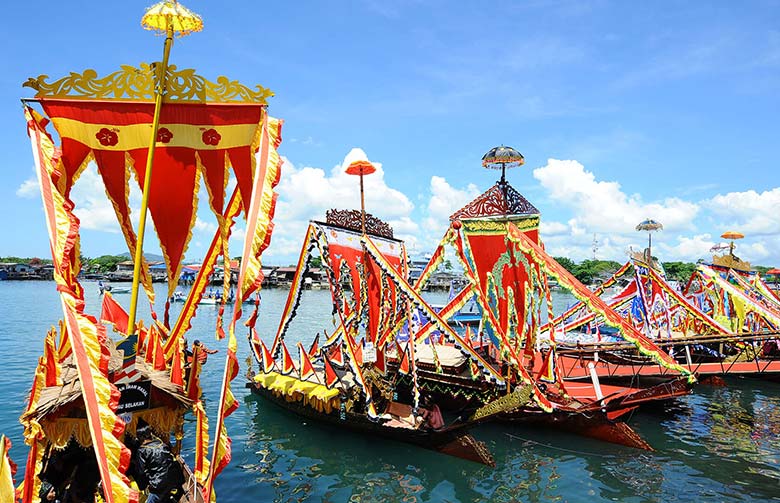
The Island Tourism Festival is not just a cultural event but a celebration of Andaman and Nicobar's natural beauty and cultural diversity. It brings together communities and visitors in a grand display of cultural pride and joyous celebration. The festival's unique blend of indigenous traditions, settler cultures, and contemporary celebrations makes it the true essence of Andaman and Nicobar's spirit as a society that honors its diverse roots while embracing unity and harmony.
Subhash Mela is one of the most important and unique festivals in Andaman and Nicobar Islands, celebrated with great enthusiasm across the territory. This festival commemorates Netaji Subhash Chandra Bose's historic visit to the islands in 1943 and his declaration of Andaman as the first Indian territory to be liberated from British rule. Subhash Mela reflects the islands' significant role in India's freedom struggle and their deep connection with national heroes.

In conclusion, Subhash Mela is not just a historical commemoration but a magnificent display of Andaman and Nicobar's patriotic spirit and national integration. It brings together islanders in a celebration that honors their unique place in India's freedom struggle, showcasing the territory's deep connection with national history and its people's commitment to preserving this legacy.
Subhash Mela is more than a historical commemoration; it is a living tradition that showcases the unique historical identity of Andaman and Nicobar Islands. As one of the most significant festivals in the territory, it represents the islands' commitment to preserving their historical heritage while celebrating their place in the Indian nation. The festival stands as a testament to the rich historical legacy that makes Andaman and Nicobar unique among Indian union territories.
Beach Festival is a popular celebration in Andaman and Nicobar Islands that highlights the territory's stunning coastal beauty and marine resources. This festival features various beach-related activities, water sports, and cultural events that showcase the islands' connection with the sea. The Beach Festival celebrates the coastal lifestyle and natural wonders that make Andaman and Nicobar a tropical paradise.
Beach Festival in Andaman and Nicobar is not just a recreational event but a reaffirmation of coastal identity and environmental consciousness. From the exciting water sports to the cultural performances on the beach, every aspect reflects Andaman and Nicobar's identity as a society that values its natural heritage while embracing sustainable development. The festival's unique blend of recreational activities, environmental awareness, and cultural expression makes it an essential part of Andaman and Nicobar's cultural calendar.
The festivals of Andaman and Nicobar Islands showcase its incredible cultural diversity, natural beauty, and historical significance. From the vibrant tourism festivals to the patriotic commemorations, and from the beach celebrations to traditional religious observances, every festival reflects the territory's spirit of unity in diversity. This harmonious coexistence of different traditions makes Andaman and Nicobar a unique example of cultural richness in India, where indigenous heritage and settler cultures blend seamlessly, and where diverse cultural practices create a vibrant cultural mosaic that is distinctly islander.

Andaman and Nicobar Islands, though one of India's most remote union territories, boasts urban centers that beautifully blend natural beauty with modern development. Its towns and cities are not only administrative and economic hubs but also gateways to the territory's incredible natural wonders, where modern amenities coexist with pristine environments. Each settlement plays a distinctive role in shaping Andaman and Nicobar's character and pride, reflecting the territory's journey from remote islands to developed union territory.
Port Blair, the capital of Andaman and Nicobar Islands, serves as the political, administrative, and cultural heart of the territory. Located on South Andaman Island, this historic city has been the center of administration and development for the islands. Port Blair beautifully balances its role as a capital with preservation of natural beauty, making it one of India's most unique urban centers and the face of modern Andaman and Nicobar.
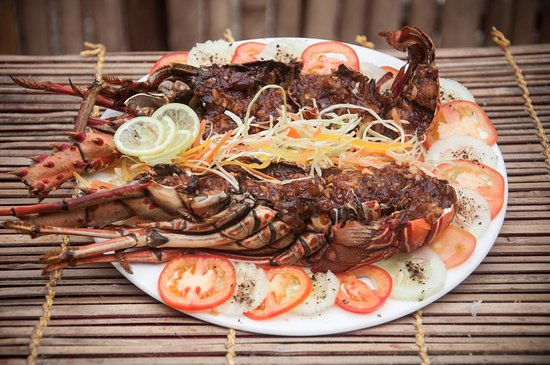
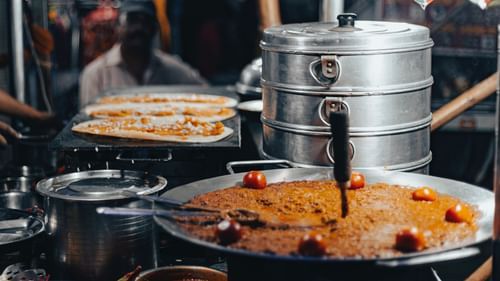
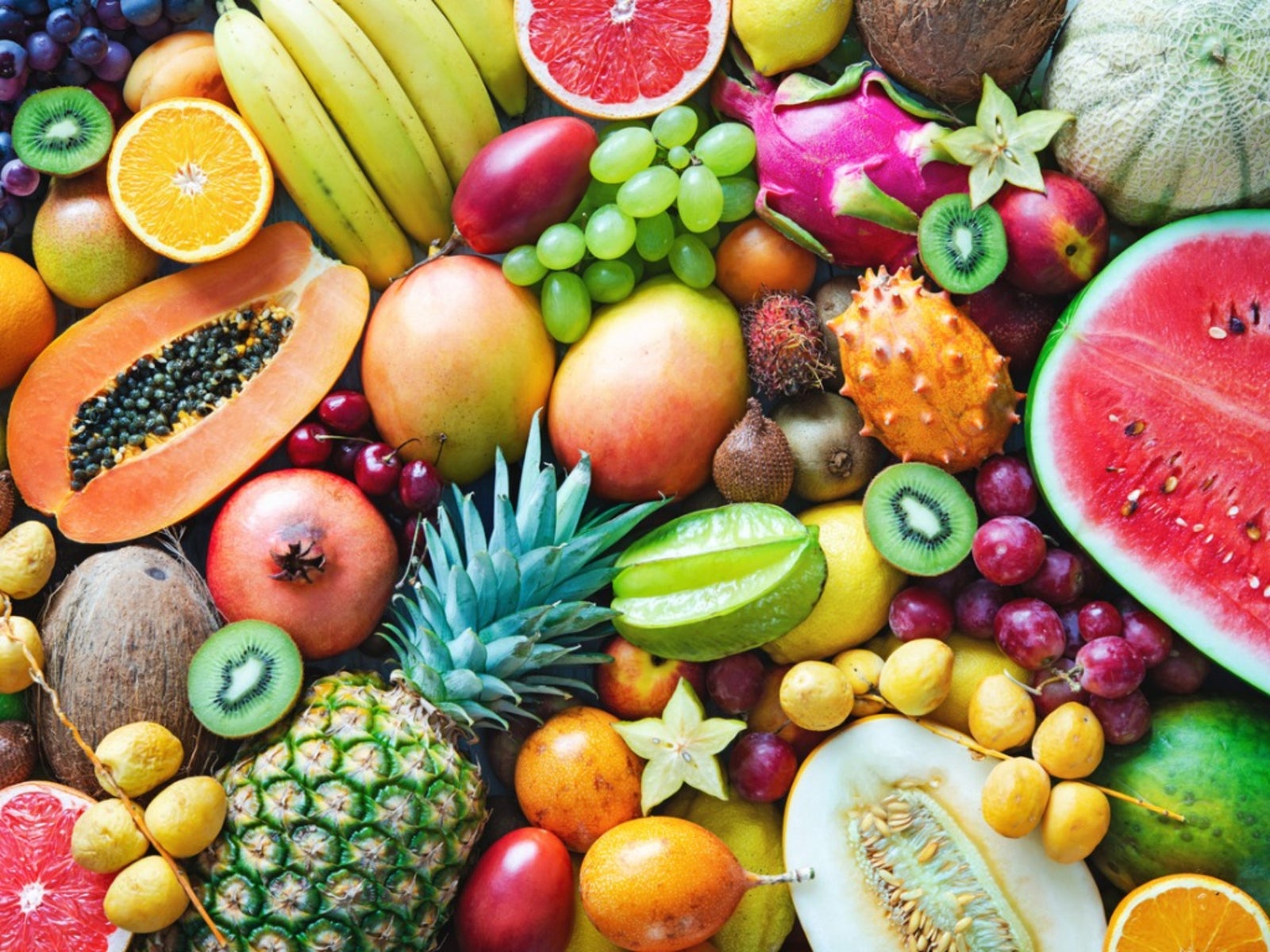
The Cellular Jail in Port Blair is one of the most important historical and national monuments in India, serving as a symbol of India's struggle for independence. This magnificent prison complex showcases the brutal colonial history and the sacrifices of freedom fighters, providing visitors with a comprehensive understanding of India's freedom movement and the islands' role in it.
The jail complex features seven wings radiating from a central tower, designed to prevent communication between prisoners. The most significant structures include the individual cells, gallows, and punishment blocks that showcase the harsh conditions faced by political prisoners. The complex also features a museum and exhibition halls that document the history of the freedom struggle.
Cellular Jail is not just an historical site but also a living symbol of India's patriotic spirit and national pride. It represents the cruelty of British colonial rule and the resilience of Indian freedom fighters. The jail has witnessed numerous historical events and has become a pilgrimage site for those interested in India's freedom movement.
The jail complex is located in the heart of Port Blair and covers a large area. The well-maintained gardens and the light and sound show make it a popular educational and tourist destination. The jail also serves as an important venue for patriotic events and ceremonies.
Today, Cellular Jail stands as a symbol of India's historical legacy and national pride. It represents the vision of preserving an important chapter of Indian history while serving as an educational resource for future generations.
In conclusion, Cellular Jail is much more than a historical monument—it is a living repository of India's freedom struggle, telling the story of sacrifice and resilience that defines modern India, and serving as a bridge between the past and present of the nation.
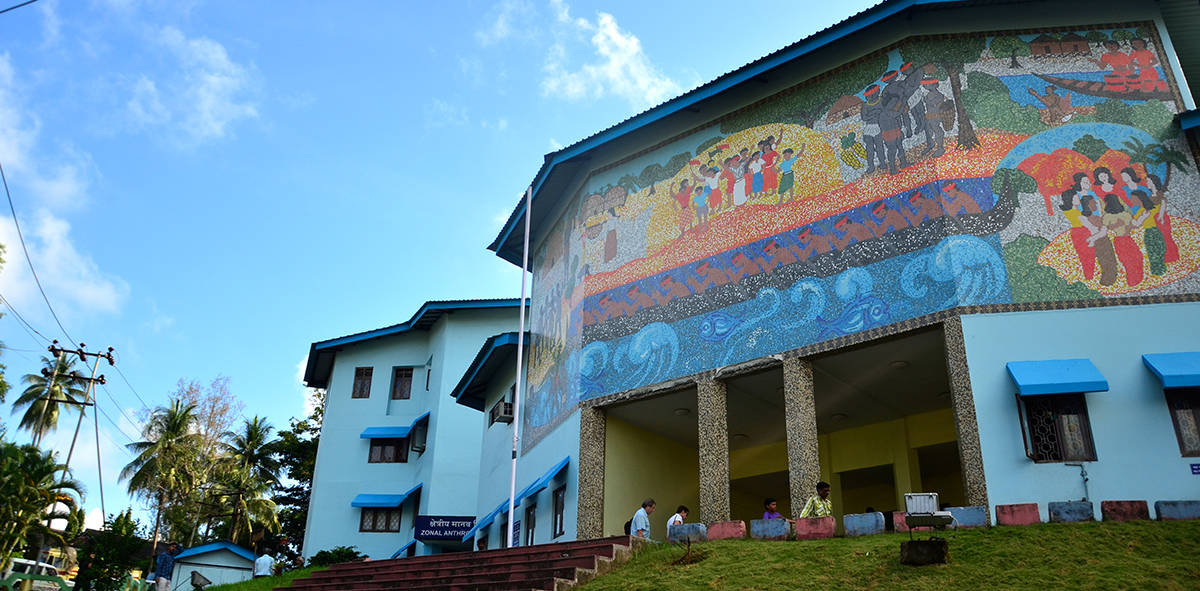
The Anthropological Museum in Port Blair is a comprehensive museum dedicated to the indigenous tribes of Andaman and Nicobar Islands. This well-organized museum provides visitors with insights into the territory's unique tribal communities, their traditions, and their way of life, serving as an important educational resource and cultural institution.
The museum houses extensive collections of tribal artifacts, photographs, models, and ethnographic materials. The exhibits are organized thematically, covering different aspects of tribal life including hunting and gathering techniques, shelter, clothing, ornaments, and religious beliefs. The museum also features life-size models of tribal huts and canoes.
The Anthropological Museum is not just a repository of artifacts but also an active institution involved in research, documentation, and cultural preservation. The museum conducts educational programs and exhibitions that help promote understanding and appreciation of the islands' tribal heritage. The library and archives provide valuable resources for researchers and students.
From a cultural perspective, the Anthropological Museum represents the commitment to preserving and understanding the unique indigenous cultures of the islands. The museum stands as a testament to the diversity of human cultures and the importance of protecting cultural heritage.
In conclusion, the Anthropological Museum is more than just a collection of artifacts—it is a living institution that connects the islands' past with its present and future. It serves as a constant reminder of the rich cultural heritage that defines Andaman and Nicobar's identity and inspires citizens and visitors to appreciate and respect indigenous cultures.

Corbyn's Cove Beach in Port Blair is one of the most popular beaches in the Andaman Islands, known for its scenic beauty and recreational facilities. This beautiful beach represents the tropical paradise that characterizes the Andaman and Nicobar Islands, while also serving as an important recreational space for locals and tourists alike.
The beach features pristine white sand, coconut palms, and clear blue waters. The most attractive features include the well-maintained promenade, water sports facilities, and the serene atmosphere. The beach has been developed as a comprehensive recreational destination with various facilities while maintaining its natural beauty.
Corbyn's Cove Beach is not just a natural attraction but also an important economic resource for Port Blair. The beach supports tourism-related businesses that have become important for the local economy. The development of tourism infrastructure and the preservation of natural beauty represent a balanced approach to coastal development.
The beach's location near urban Port Blair makes it easily accessible while providing a natural retreat from city life. The well-maintained facilities, security arrangements, and cleanliness ensure a comfortable and enjoyable experience for visitors. The beach also features restaurants and snack bars that cater to tourists.
In conclusion, Corbyn's Cove Beach is more than just a beach—it is a testament to Andaman and Nicobar's natural beauty and tourism potential. It represents the territory's commitment to environmental conservation and sustainable tourism development, while providing both recreational benefits and economic opportunities for local communities.
The Chatham Saw Mill in Port Blair is one of the oldest and largest wood processing plants in Asia, with significant historical and economic importance. This industrial landmark represents the islands' forest resources and their sustainable management, while also serving as an interesting tourist attraction.
The saw mill features historical machinery, timber yards, and processing facilities that showcase the timber industry in the islands. The most significant elements include the vintage sawing equipment, the timber museum, and the display of various wood species found in the Andaman forests. The mill complex also features a Japanese bunker from World War II.
Chatham Saw Mill is not just an industrial facility but also an important historical site. The mill has operated since British colonial times and has witnessed significant historical events. The mill's role in the islands' economy and its adaptation to changing environmental regulations make it an interesting case study in sustainable resource management.
From an educational perspective, Chatham Saw Mill offers insights into forest management, timber processing, and industrial history. The well-maintained visitor areas and informative displays ensure an educational experience for visitors. The mill also serves as a reminder of the importance of balancing economic development with environmental conservation.
Today, Chatham Saw Mill stands as a symbol of Andaman and Nicobar's industrial heritage and sustainable development. It represents the vision of utilizing natural resources responsibly while preserving ecological balance.
In conclusion, Chatham Saw Mill is more than just an industrial facility—it is a living example of Andaman and Nicobar's economic history and environmental commitment. It serves as a constant reminder of the territory's rich natural resources and the importance of their sustainable management for future generations.
Marina Park in Port Blair is a beautifully developed waterfront park that offers recreational opportunities and scenic views of the sea. This well-maintained park represents the commitment to providing quality public spaces while showcasing the natural beauty of the islands' coastline.
The park features well-landscaped gardens, walking paths, children's play areas, and seating arrangements with sea views. The most attractive aspects include the musical fountain, the viewing decks, and the overall peaceful atmosphere. The park has been designed to provide a comfortable and enjoyable experience for visitors of all ages.
Marina Park is not just a recreational space but also an important social venue for the community. The park hosts cultural events, public gatherings, and leisure activities that bring people together. The park's role in community life and its maintenance standards make it a model for public space development.
From an urban planning perspective, Marina Park represents the importance of green spaces in urban environments. The park's design incorporates local vegetation and sustainable features that enhance its environmental value. The park also serves as a venue for environmental education and awareness programs.
In conclusion, Marina Park is more than just a park—it is a symbol of Port Blair's quality of life and environmental consciousness. It represents the understanding that urban development and natural beauty can coexist harmoniously, creating spaces that benefit both residents and visitors while preserving the unique character of the islands.
Port Blair is more than just a capital city — it is the dynamic heart of Andaman and Nicobar Islands where history meets natural beauty, and where modern development coexists with environmental conservation. From its historical landmarks to its modern infrastructure, from its cultural institutions to its growing economy, Port Blair represents the perfect blend of heritage and progress. Truly, Port Blair embodies the spirit of Andaman and Nicobar as it moves confidently into the future while honoring its rich historical and natural heritage, serving as a model for sustainable development in India's island territories.
Havelock Island, officially known as Swaraj Dweep, is one of the most popular tourist destinations in Andaman and Nicobar Islands, known for its pristine beaches, crystal-clear waters, and vibrant marine life. This beautiful island serves as the crown jewel of Andaman tourism and represents the territory's incredible natural beauty and ecotourism potential. Havelock Island showcases a perfect blend of natural wonders and sustainable tourism development, making it one of India's most attractive island destinations.
Havelock Island is not just a tourist destination but also a symbol of Andaman and Nicobar's natural beauty and sustainable development. With its world-class beaches, vibrant marine ecosystem, and commitment to environmental conservation, Havelock rightfully earns its place as the tourism capital of the union territory, making it a proud representative of Andaman and Nicobar's tourism capabilities and its journey from remote island to world-class destination.
Neil Island, officially known as Shaheed Dweep, is a beautiful island known for its agricultural productivity, serene beaches, and relaxed atmosphere. This charming island serves as an important agricultural center and emerging tourist destination, representing the sustainable development and natural beauty of Andaman and Nicobar Islands. Neil Island showcases a perfect balance between agriculture and tourism, making it an important component of the territory's economy and lifestyle.
Neil Island stands as a symbol of Andaman and Nicobar's agricultural heritage and tourism potential. From the productive farms to the beautiful beaches, and from the traditional lifestyle to the growing tourism infrastructure, the island reflects Andaman and Nicobar's potential as a territory that balances economic development with environmental preservation. Its role as an agricultural hub and emerging tourist destination makes Neil Island an essential component of Andaman and Nicobar's economic and cultural landscape.
The settlements of Andaman and Nicobar Islands reflect the diverse character and multiple dimensions of the union territory. While Port Blair showcases governance and historical heritage, Havelock Island represents tourism excellence and natural beauty, and Neil Island demonstrates agricultural productivity and sustainable development. Together, these centers present a comprehensive picture of Andaman and Nicobar's journey from remote islands to developed union territory, balancing economic development with environmental conservation, tourism growth with cultural preservation, and modern amenities with natural wonders.
The fashion of Andaman and Nicobar Islands is a vibrant reflection of its tropical climate, indigenous heritage, and cultural diversity. Clothing in the territory represents a beautiful synthesis of traditional tribal attire, practical island wear, and contemporary influences. From the minimal clothing of indigenous tribes to the practical wear suited for the tropical climate, and from traditional settler costumes to modern beach fashion, Andaman and Nicobar's clothing scene offers a fascinating glimpse into the territory's unique identity and social evolution, showcasing how traditional ways coexist with modern lifestyles in this island paradise.
Andaman and Nicobar's indigenous tribes have unique traditional attire that reflects their ancient cultures, tropical environment, and traditional lifestyles. From the minimal clothing of the Sentinelese to the distinctive adornments of other tribes, the territory's indigenous fashion showcases incredible diversity and cultural significance. These traditional attires are not just clothing but integral parts of cultural identity and social organization, representing the islands' original inhabitants and their deep connection with nature.
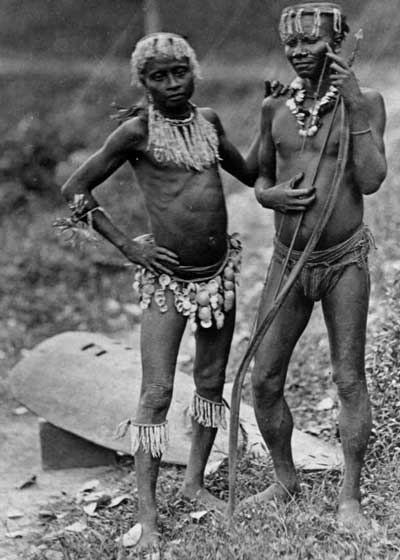
Indigenous tribal fashion in Andaman and Nicobar Islands is a magnificent display of cultural diversity, environmental adaptation, and traditional wisdom. From the minimal clothing of the Sentinelese to the elaborate adornments of other tribes, each community's attire reflects their unique relationship with their environment and cultural heritage. These traditional clothing practices represent not just practical necessity but comprehensive systems of cultural expression that connect people to their heritage, environment, and social structures, while maintaining their distinct identities in the modern world.
The settler communities in Andaman and Nicobar Islands have brought their traditional clothing styles from mainland India, adapting them to the tropical island environment. The clothing varies from traditional ethnic wear to practical modern attire suited for the climate and lifestyle. Even in the island setting, traditional attire is proudly worn during festivals, weddings, and cultural events, showcasing the diverse cultural heritage that settlers have brought to the islands.

Setter community fashion in Andaman and Nicobar Islands is a vibrant expression of the territory's cultural diversity and the adaptation of mainland traditions to island life. From the distinct traditional attires of different communities to practical adaptations for the climate, and from ceremonial costumes to everyday wear, each element tells the story of cultural preservation and adaptation. These clothing traditions demonstrate how settler communities have maintained their cultural heritage while adapting to their new island home, creating a rich tapestry of cultural expressions that contribute to the unique identity of Andaman and Nicobar Islands.
Andaman and Nicobar Islands' tropical climate and coastal lifestyle have influenced the development of practical fashion suited to the environment. The clothing combines functionality with style, addressing the needs of humid weather, water-based activities, and island life. This practical fashion represents the adaptation to local conditions while maintaining cultural identity and personal expression, creating a unique island style that blends tradition with practicality.
Practical island fashion in Andaman and Nicobar Islands is a living example of adaptation and innovation in response to environmental conditions. From climate-appropriate clothing to specialized beach wear, and from sun protection to comfortable footwear, these fashion choices not only address practical needs but also express the unique island identity. They represent the territory's ability to blend functionality with cultural expression, creating a distinctive style that reflects the tropical paradise while respecting diverse cultural traditions and environmental sustainability.
While Andaman and Nicobar Islands maintain strong traditional and practical clothing traditions, modern fashion has made significant inroads, especially in urban areas and among the younger generation. Today, people creatively blend global fashion trends, contemporary Indian styles, and local elements to create a unique fashion identity. Andaman and Nicobar's fashion scene reflects its evolving urban culture, youth aspirations, and global connections while maintaining strong cultural roots, creating a dynamic fashion landscape that honors tradition while embracing change and innovation.
Modern fashion in Andaman and Nicobar Islands represents a dynamic dialogue between tradition and innovation. While urban youth embrace global trends and new expressions, cultural events and special occasions still honor the territory's diverse heritage through traditional wear. This creative combination of old and new makes Andaman and Nicobar's fashion scene vibrant and evolving, where clothing becomes a medium of cultural expression, personal identity, and social change, reflecting the islands' journey from remote territory to modern Indian union territory with a unique cultural identity.
Andaman and Nicobar Islands' fashion is a beautiful reflection of the territory's cultural diversity, tropical environment, and social evolution. From the unique traditional attire of indigenous tribes to the practical clothing suited to island life, and from the diverse settler community fashions to modern interpretations, the territory's clothing heritage continues to evolve while maintaining its unique identity. It not only represents the cultural pride of Andaman and Nicobar's diverse communities but also demonstrates their ability to adapt and innovate, creating a fashion landscape that honors the past while embracing the future, much like the territory itself which balances its rich cultural heritage with modern development and environmental consciousness.